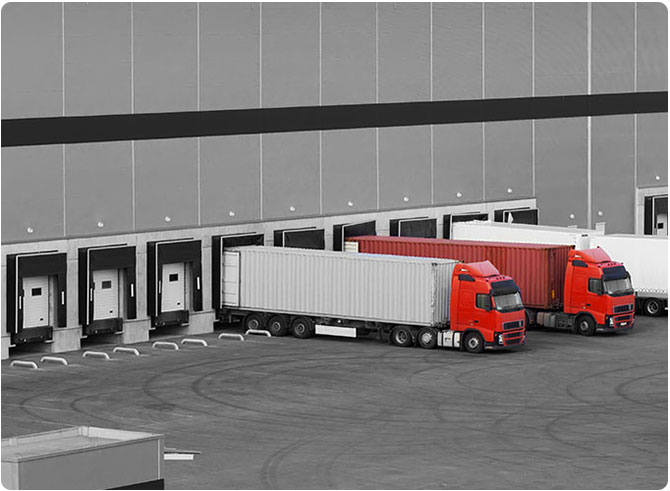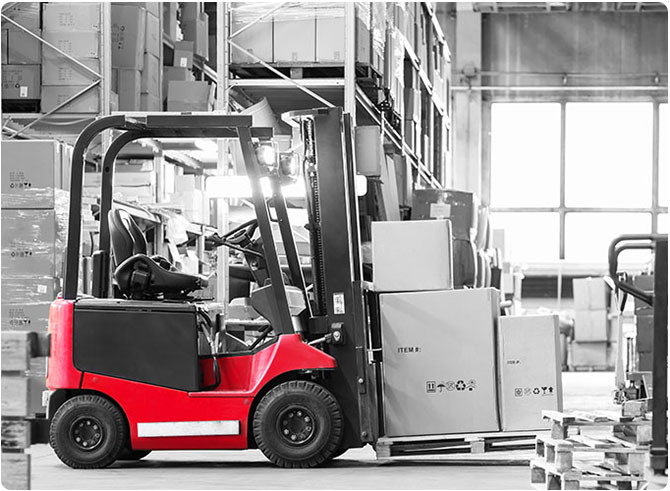Engeneered
With European
Quality
Production
The maintenance-free system of recording production in progress is one of the applications of UHF RFID technology in which it works best. This type of system is particularly convenient in a situation where the produced semi-finished items are transported to the next positions on pallets or in reusable containers.
The benefits of such solutions are:
- Real-time information about the status of each order without additional labor costs
- Information about real bottlenecks
- Production schedules updates
- Support for ISO quality management procedures
- Shortening the time of order execution
- Low variable costs of implementation – tags are reusable
The main objective of the system is to provide production managers with accurate information about the status of each production order as well as current information about the queues of semi-finished products waiting for further processing.
The system works with the existing production software or creates its own database with the information about the state of production in progress.
Its basic functions are:
coding of rfid tags permanently fixed to pallets of containers
At the beginning of the production process, a pallet or a container marked with an RFID tag is placed in a location where its RFID tag is encoded by the RFID reader with the appropriate order number.
registration of QUEUING to the position
At the moment when the pallet or container moves on the conveyor belt or is transported through the registration gate at the entrance to the work station, the identifier collected from the tag is transferred along with the station number to the superior system.
registration of the completion of the operation on the position
At the moment when a pallet or a container moves on the conveyor belt or is transported through the registration gate at the exit from the work station, the identifier read from the tag is transferred along with the station number to the superior system.
registration of put away / pick up from the storage field
At the moment when a pallet or a container is transported through the storage bay gate, the identifier read from the tag is transmitted along with the storage bay identifier to the supervisory system. If the situation requires, gates can record the transfer of pallets and containers between production departments.
The system has been implemented in several production companies in the clothing, furniture and metal industries.
Everywhere it improved business processes through current information about the progress of production.
Retail
Radio-Frequency Identification (RFID) technology has become increasingly popular in the retail industry as a means of improving supply chain management and enhancing the shopping experience for customers. RFID tags, which are attached to products or packages, can be read by RFID readers to track their location and movement throughout the supply chain. This provides retailers with real-time visibility into their inventory and reduces the likelihood of stockouts.
In addition to its benefits in supply chain management, RFID technology is also being used in retail stores to create a more seamless shopping experience for customers. For example, RFID-enabled clothing stores can use the technology to track the location of products on the sales floor and instantly update inventory levels. This helps prevent customers from encountering out-of-stock items and enables retailers to restock products more efficiently. RFID technology can also be integrated with customer loyalty programs and mobile payment systems, allowing retailers to personalize their offerings and create a more seamless shopping experience for customers.
parkings
Parking systems based on UHF RFID technology allow for wireless automatic management of vehicle entry and exit, which largely converts to the amount of human resources necessary for their operation and precise vehicle verification.
The parking system based
on the latest technologies allows for:
- Identification of entering and leaving vehicles
- Control of the time of entry, exit and the presence ofnthe vehicle in the parking lot
- User control, creating groups of access authorizations
- Counting and verifying vacancies in the parking sectors
- Accurate verification of the history of journeys, thanks to which you can create statistics and analyze the load on the object
- Safety through vehicle authorization contro

The system usually consists of several entry and exit gates, antennas controlling vehicles located close the barriers, parking management software located in the cloud or on a local server, and an application that allows you to administer and control the parking system
Unique tags are assigned to the vehicles using the parking lot thanks to which the vehicle approaching the gate is identified and recognized. The main assumption is to relieve the people who manage the parking lot and security staff – who can devote their attention to the supervision and safety aspects of the parking lot
As an experienced integrator, we provide RFID system implementation services for both newly created and existing parking lots, reducing the labor intensity of their operation.
logistics
By using RFID technology, most of the processes related to the identification and control of vehicles and goods can be carried out almost automatically, which eliminates factors such as errors, oversights or deliberate data corruption.

Proximity identification systems are used in
systems responsible for logistics.
Thanks to their use, it is possible to:
- Manage parking lots in large logistics centers
- Automate of vehicle weight measurement
- Locate accurately vehicles inside and outside logistics centers
- Improve security procedures and documents flow
- Ease cooperation with commodity management systems
- Checking the conditions and quantity of goods at various stages of transport and many others
By using RFID technology, most of the processes related to the identification and control of vehicles and goods can be carried out almost automatically, which eliminates factors such as errors, oversights or deliberate data corruption.
warehousing
One of the fundamental features of systems using UHF RFID technology is the ease with which tags can be scanned or indexed from a considerable distance. It is suitable even for distances of several meters from the scanned object and the obstacles through which electromagnetic waves simply penetrate.
For example, a box full of labeled products can be scanned with a handheld reader without opening it, returning a detailed list of items in it, and even their condition such as the humidity in which they are located or the condition of the seal being broken.
A warehouse personnel with a handheld reader is able to scan a large multi-storey warehouse rack in search of a specific product or to inventory the goods on it in a few minutes
All these factors make UHF RFID
inventory systems suitable for:
- Warehouses
- Libraries
- Service points
- Goods tracking systems and many other applications

libraries
All of us using the library services can easily observe that both returning and borrowing books require a number of manual operations. Books tagged with RFID tags can be automatically recognized by specially constructed kiosks, which saves time, eliminates the possibility of making a mistake and, in addition, allows you to complete most of the procedures in special self-service kiosks.
Erefide cooperates
with provider of applications in the area of libraries and archives that support our RFID infrastructure. Our company supports integrates solutions with our own proprietary products based on precise research, designs, and our own assembly in Poland. Our RFID systems have already been integrated with the ALEPH 500, PROLIB M21, VTLS / Virtua library systems, and the logic of the RFID system and the implementation of the SIP-2 protocol enable easy integration with other library systems.
There are two main technologies for
tagging book collections
Older one using RFID HF technology (13.56 MHz), with label size of 50 x 80 mm is glued on the cover and allows reading with a mobile reader from a few centimeters. The most recent one bases on RFID UHF technology (868 MHz) with a label a few millimeters wide pasted in a book is completely invisible to the reader and allowing reading with a mobile reader from a few meters, which makes it easier to find a lost item or quickly make a counter
Employees who previously dealt
with the labor-intensive handling of loans and returns can devote more time to their librarian profession, keeping the book collection up-to-date and serving readers, to a much greater extent than before, with knowledge and advice in the selection of books. A huge benefit from the use of the RFID technologies is also observed in the performance of the counter, and the modern RFID UHF extends the range to find lost items on endless shelves.
